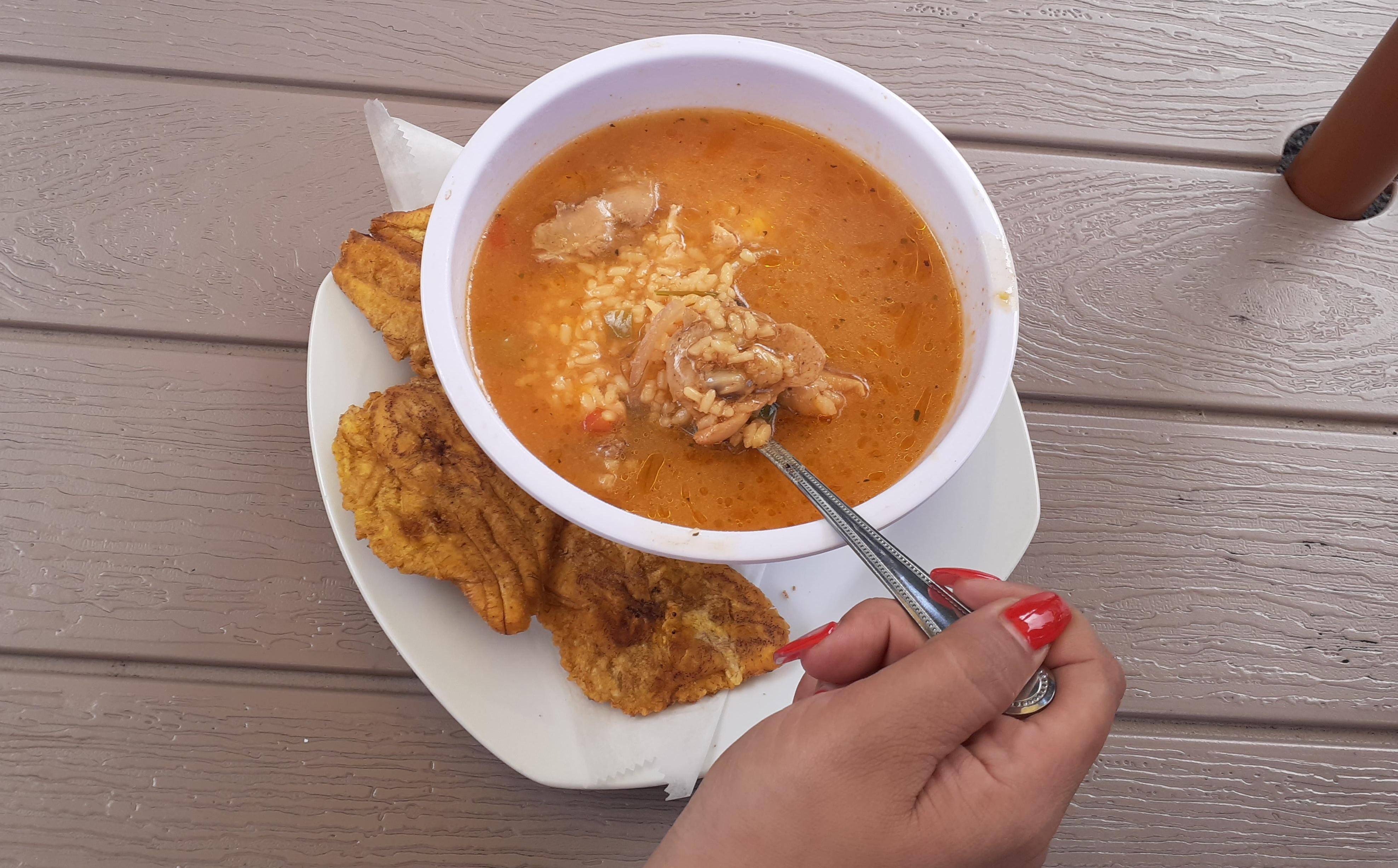Asopao Is Puerto Rico's Pride And Joy—as Long As You Make It Correctly
Journeying through Puerto Rico’s mountains and varied food culture
The diversity of the beauty of Puerto Rico, la isla del encanto (the island of enchantment), always gets me. Sure, there are palm trees, pretty beaches, and striking colonial architecture, but a lot of people don't realize that there are also waterfalls, a rainforest (the only tropical rainforest in the United States), mangroves, salt marshes, and mountains to explore. In fact, Puerto Rico is mostly mountainous, with 60% of the island covered in hilly terrain and slopes. After visiting many of Puerto Rico's beautiful landscapes over the years, I was excited to finally take in the central mountain towns of Cayey and Ciales recently. Not only did I encounter a rich legacy of arts and history in these mountain towns, but I learned firsthand about the significance of Puerto Rican food culture.
I stepped past coffee plants, starfruit trees, and huge, waving monstera leaves to a winding stone trail in the hillside community of Cercadillo in Cayey. I followed the trail to what was essentially a spacious treehouse in the middle of a small farm overlooking the mountains. The rustic decor fit perfectly with El Pretexto's focus as a culinary farm lodge. With the backdrop of passion fruit vines and banana trees, the owner served a series of fresh-picked dishes including a panzanella salad and halibut with a yam mash.
After an impromptu appearance by a group of neighbors who formed a parranda, or caroling group, playing traditional instruments like the cuatro, maracas, and guiro (gourd instrument), I was treated to a glass of pitorro, the local moonshine made from coffee. Once the music was over, a heaping bowl of asopao, a rice stew typically served after a long night of parrandas, was placed in front of me. The stew was thick and filled with chicken and clumps of rice spiked with cilantro and onions, finishing off the night with filling comfort. I tweeted a pic of the bowl and noted that asopao is a beloved Puerto Rican dish. I would soon discover just how beloved.
I woke up the next morning to my first viral tweet. Although the chef had explained when he served it that the asopao had been left on too long, it was my first time tasting the dish, so I didn't realize that the lumpy appearance was not typically how the stew is presented. My photo sparked outrage across the island: Boricuas were insulted by the depiction and demanded that I try a proper asopao.
Personal recipes, restaurant recommendations, and questions about who served me the dish quickly followed. For two days. One tweeter explained that Puerto Ricans were sensitive after celebrity chef Gordon Ramsey had committed "a hate crime" against Puerto Rican pegao earlier this year. I didn't take the outpouring personally; in fact, I was actually intrigued by how seriously this dish is regarded. So as I traveled through the region, my new mission was to taste a traditional, "perfect" bowl of asopao.
Cayey is famous for its ruta del lechón, or "pork highway," which serves up the island's famous roasted suckling pig in a winding strip of cafeteria-style eateries. I don't eat pork, but it's a requirement to check out the highway while traveling in Cayey, so I sidled up to three different kiosks and tasted sides like white yams, sopa de plantano (plantain soup), and guineitos en escabeche, or pickled green bananas in a tangy oil and vinegar marinade that became my favorite. But no asopao.
In Ciales, I strolled the tree-lined Paseo Lineal Juan Antonio Corretjer and absorbed panoramic views of the Manati River and the lush mountains at this lookout named for a noted local poet and activist. I sipped expertly brewed local coffee and browsed 19th-century artifacts at the Museo del Cafe and munched on onion pastelillos and drank fresh passion fruit and ginger mojitos a the iconic mountaintop gem, Casa Vieja. But no asopao.
Finally, on a country road lined with roosters and a bridge painted with the colors of the Puerto Rican flag, I found it. Abolengo restaurant was filled with customers and salsa pumping from its open sides. On the outside patio, I was served asopao, a steaming bowl of orange broth big enough for 12 people. It was edged with crispy tostones and brimming with rice, chicken, and bay leaves. I slurped the savory dish, scooping the rice onto the tostones. It tasted like Puerto Rico.
I talked to internationally acclaimed Puerto Rican chef and restaurant owner Mario Pagán about the significance of asopao, and he was adamant about the fact that there is no one way to make it.
"It's a personalized dish, there's no classic recipe," Pagán said. "Nobody can claim that they have the perfect asopao. It varies from household to household and depends on taste."
The traditions behind the dish also vary. Pagán explains: "A lot of Puerto Rican dishes are a mix of Africa and Spain. Asopao is like gumbo, but the preparations depend on what side of the mountain you grew up on. I call it a soupy risotto, but I don't like a lot of broth personally. It's a traditional Puerto Rican dish that we eat in the winter, when it rains or when you have a hangover. It's also popular during the holidays. It's basically our pho; you can have it however you like it."
Here's a recipe for asopao de pollo if you're interested in making it at home. Find a way to make it your own this season.
